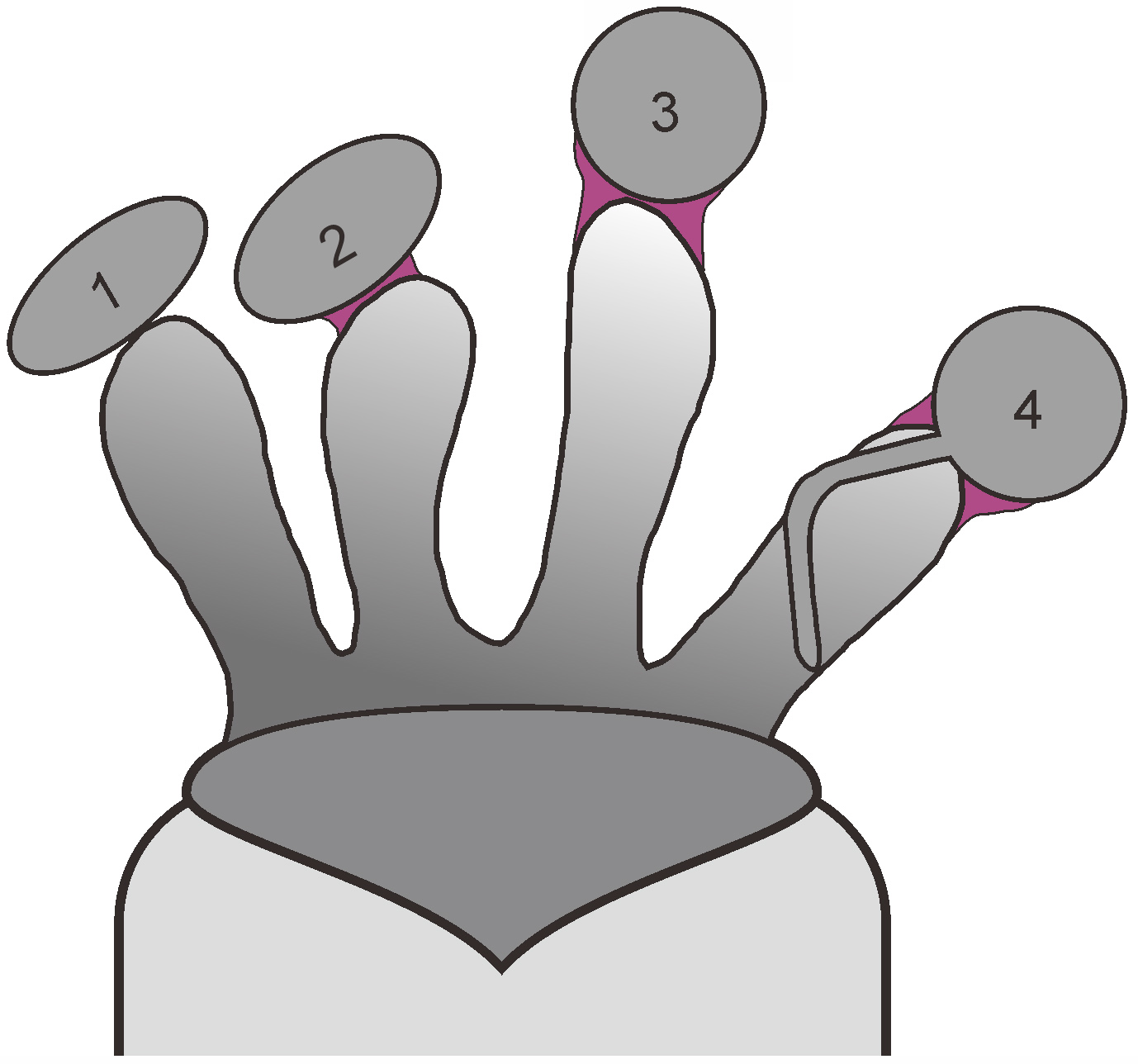

花粉外被蛋白B类小肽, 花粉打开柱头大门的一把钥匙
收稿日期: 2021-03-15
录用日期: 2021-03-24
网络出版日期: 2021-04-09
基金资助
国家自然科学基金(31800264)
POLLENCOAT PROTEIN B-class Peptides (PCP-Bs), a Key of Compatible Pollen to Open the Gate of Stigma
Received date: 2021-03-15
Accepted date: 2021-03-24
Online published: 2021-04-09
植物有性生殖过程中, 花粉-柱头间的识别作用是确保亲和花粉萌发、完成受精并保持后代遗传稳定性的重要环节, 也是农业生产上杂交育种的一个障碍。相关研究历来备受关注。然而, 经过几十年的研究, 亲和花粉如何被识别仍是未解之谜。最近, 华东师范大学李超团队的研究成果, 揭示花粉外被B类小肽PCP-Bs与柱头分泌的RALF23/33小肽竞争性地与柱头乳突细胞质膜上的ANJ-FER受体激酶复合体直接结合, 通过下游RAC/ROP-NADPH氧化酶信号途径调节柱头活性氧水平, 从而调节亲和花粉水合作用的机制。这一发现是认识花粉与柱头识别机制的重要突破。

关键词: 花粉-柱头识别; 花粉外被蛋白; ANJ-FER受体激酶复合体; 小肽; 活性氧
王伟, 孙蒙祥 . 花粉外被蛋白B类小肽, 花粉打开柱头大门的一把钥匙[J]. 植物学报, 2021 , 56(2) : 147 -150 . DOI: 10.11983/CBB21048
During sexual plant reproduction, pollen-stigma recognition is a critical step for the germination of compatible pollen to ensure successful fertilization and genetic stability of offspring. It is also the first barrier for interspecific hybridization in crop breeding. Thus, great efforts have been made in relevant investigations during past decades. However, how the compatible pollen is recognized by the stigma remains a mystery. Recently, Chao Li’s group from East China Normal University published their work inScience, which reveals that POLLEN COAT PROTEIN B-class peptides (PCP-Bs) could compete with stigma RALF23/33 for binding to the ANJ-FER complex on stigma surface, resulting in a decline of stigmatic reactive oxygen species (ROS) that facilitates compatible pollen hydration. This finding represents a breakthrough in the field.

| [1] | Cabrillac D, Cock JM, Dumas C, Gaude T (2001). The S-locus receptor kinase is inhibited by thioredoxins and activated by pollen coat proteins. Nature 410,220-223. |
| [2] | Chapman LA, Goring DR (2010). Pollen-pistil interactions regulating successful fertilization in the Brassicaceae. J Exp Bot 61, 1987-1999. |
| [3] | Doucet J, Lee HK, Goring DR (2016). Pollen acceptance or rejection: a tale of two pathways. Trends Plant Sci 21,1058-1067. |
| [4] | Heslop-Harrison J (1975). Incompatibility and the pollen- stigma interaction. Annu Rev Plant Physiol 26,403-425. |
| [5] | Heslop-Harrison Y (1977). The pollen-stigma interaction: pollen-tube penetration in Crocus. Ann Bot 41,913-922. |
| [6] | Lin Z, Eaves DJ, Sanchez-Moran E, Franklin FCH, Frank-alin-Tong VE (2015). The Papaver rhoeas S determinants confer self-incompatibility to Arabidopsis thaliana in plan- ta. Science 350,684-687. |
| [7] | Liu C, Shen L, Xiao Y, Vyshedsky D, Peng C, Sun X, Liu Z, Cheng L, Zhang H, Han Z, Chai J, Wu HM, Cheung AY, Li C (2021). PCP-B peptides unlock a stigma 1 pep-tide-receptor kinase gated mechanism for pollination. Science doi: 10.1126/science.abc6107 |
| [8] | Mattsson O, Knox RB, Heslop-Harrison J, Heslop-Harri-son Y (1974). Protein pellicle of stigmatic papillae as a probable recognition site in incompatibility reactions. Nature 247,298-300. |
| [9] | Nasrallah ME, Liu P, Nasrallah JB (2002). Generation of self-incompatible Arabidopsis thaliana by transfer of two S locus genes from A. lyrata. Science 297,247-249. |
| [10] | Schopfer CR, Nasrallah ME, Nasrallah JB (1999). The male determinant of self-incompatibility in Brassica. Science 286, 1697-1700. |
| [11] | Takayama S, Shiba H, Iwano M, Shimosato H, Che FS, Kai N, Watanabe M, Suzuki G, Hinata K, Isogai A (2000). The pollen determinant of self-incompatibility in Brassica campestris. Proc Natl Acad Sci USA 97, 1920- 1925. |
| [12] | Wang LD, Clarke LA, Eason RJ, Parker CC, Qi BX, Scott RJ, Doughty J (2017). PCP-B class pollen coat proteins are key regulators of the hydration checkpoint in Arabidopsis thaliana pollen-stigma interactions. New Phytol 213,764-777. |
| [13] | Wheeler MJ, de Graaf BHJ, Hadjiosif N, Perry RM, Poulter NS, Osman K, Vatovec S, Harper A, Franklin FCH, Franklin-Tong VE (2009). Identification of the pollen self-incompatibility determinant in Papaver rhoeas. Nature 459,992-995. |
/
| 〈 |
|
〉 |